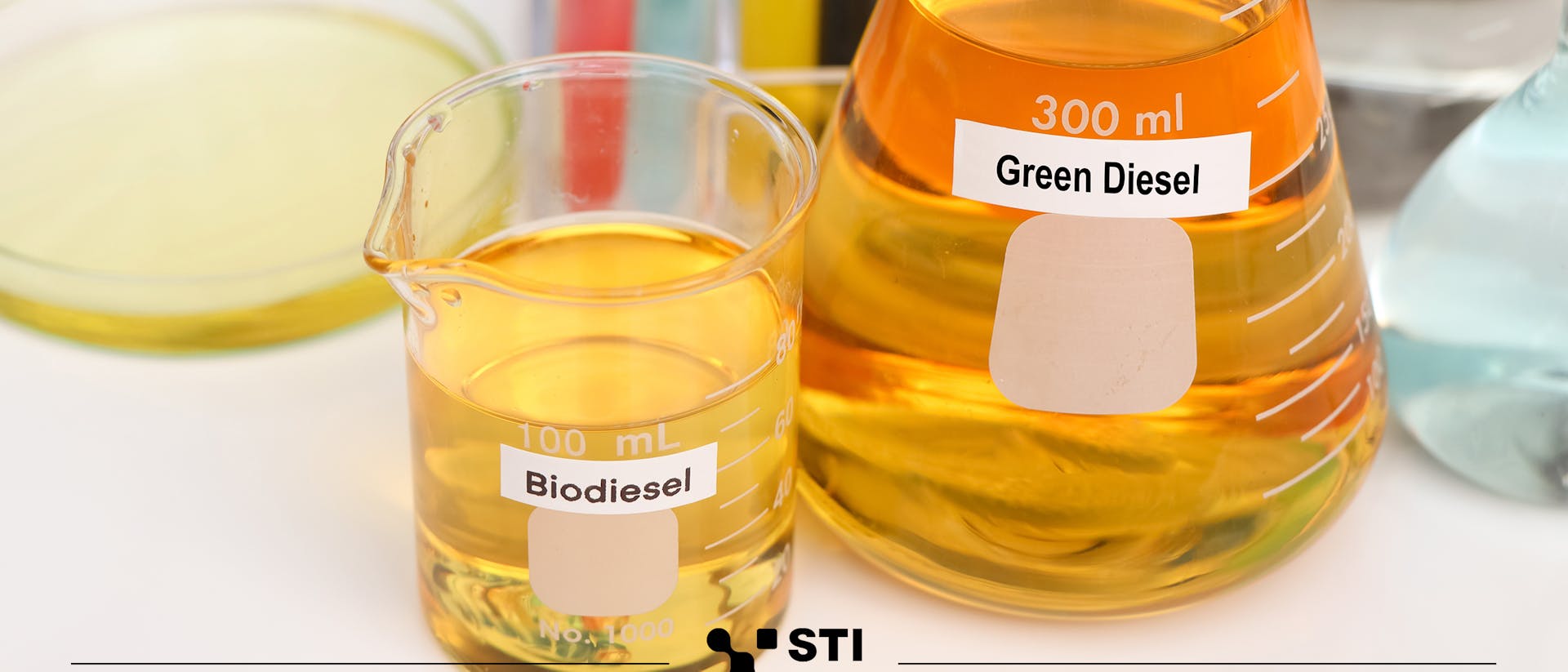
Green Diesel vs. Biodiesel: Understanding the Differences
As the worldwide demand for sustainable energy grows, alternative fuels are becoming essential to reducing dependence on fossil fuels and lowering greenhouse gas emissions. Biodiesel and green diesel are among these alternatives, but their production methods, chemical compositions, and environmental impacts significantly differ. This article explores the differences between biodiesel and green diesel, emphasizing their distinct features and contributions to a sustainable future.
Production Methods
Biodiesel
Biodiesel is produced through a chemical reaction known as transesterification. This process combines natural oils or fats—from sources like vegetable oils, animal fats, or used cooking oils—with an alcohol, usually methanol or ethanol, and a catalyst such as sodium or potassium hydroxide. The reaction yields fatty acid methyl esters (FAME), commonly referred to as biodiesel, and glycerol as a byproduct. The simplicity and scalability of this process render biodiesel a versatile alternative fuel.
Green Diesel
Green diesel, also known as renewable diesel or hydrotreated vegetable oil (HVO), is made through a process called hydrotreating. This process treats natural oils and fats with hydrogen, using a catalyst under high temperatures and pressures. This method, known as hydrodeoxygenation, removes oxygen from the triglycerides in the oils, creating a hydrocarbon product that closely resembles conventional diesel. This innovative method produces a fuel that can directly substitute conventional diesel.
Chemical Makeup
The distinct production processes of biodiesel and green diesel lead to notable differences in their chemical compositions.
Biodiesel (FAME): Comprised of fatty acid methyl esters, biodiesel retains some oxygen atoms in its structure, which distinguishes it from conventional diesel.
Green Diesel (HVO): Made up of hydrocarbons, green diesel closely mirrors the chemical structure of conventional diesel, lacking the oxygen atoms found in biodiesel.
Performance and Compatibility
The differences in chemical composition between biodiesel and green diesel result in variations in their performance and compatibility with existing diesel engines.
Biodiesel
Performance: Biodiesel has a higher cetane number than conventional diesel, which can enhance engine ignition and lower emissions of pollutants such as particulate matter and carbon monoxide. However, it typically has a somewhat lower energy content per gallon compared to conventional diesel.
Compatibility: Biodiesel can be mixed with conventional diesel in various ratios (e.g., B5, B20, where B20 indicates 20% biodiesel, 80% petroleum diesel). It is usually compatible with most diesel engines, though higher concentrations might necessitate engine adjustments or modifications to fuel system components.
Green Diesel
Performance: The energy content and cetane number of green diesel are comparable to conventional diesel, resulting in similar engine performance and fuel efficiency. Additionally, it generally emits fewer pollutants.
Compatibility: Green diesel is fully compatible with existing diesel engines and infrastructure. It doesn't require blending or modifications, making it a direct replacement for conventional diesel.
Environmental Impact
Both biodiesel and green diesel offer environmental benefits over conventional diesel, though their impacts vary based on production methods and feedstocks.
Biodiesel
Renewability: Biodiesel is renewable and biodegradable, derived from natural sources like vegetable oils and animal fats.
Emissions: Biodiesel substantially reduces greenhouse gas emissions compared to conventional diesel. It also decreases emissions of particulates, carbon monoxide, and unburned hydrocarbons. However, the oxygen present in biodiesel can cause an increase in nitrogen oxide (NOx) emissions.
Green Diesel
Renewability: Green diesel is renewable and can be produced from various biomass feedstocks, including waste oils and fats.
Emissions: Green diesel offers similar emission reductions as biodiesel, substantially lowering greenhouse gases and particulates. Unlike biodiesel, green diesel typically does not elevate NOx emissions, making it advantageous for stringent emission standards.
Conclusion
Biodiesel and green diesel represent two of the most promising alternatives to conventional diesel fuel, each bringing its unique benefits and challenges to the table. Biodiesel is produced through a chemical process known as transesterification, which involves the reaction of vegetable oils or animal fats with alcohol. This fuel option offers significant environmental benefits, including a lower carbon footprint and reduced emissions. However, the use of biodiesel requires careful consideration of engine compatibility and specific emission characteristics, as it may not be suitable for all engine types or meet all emission standards.
On the other hand, green diesel is produced through a different process called hydrotreating, in which renewable feedstocks like vegetable oils and animal fats are processed under high pressure and temperature in the presence of a catalyst. One of the key advantages of green diesel is its drop-in compatibility, meaning that it can be used in existing diesel engines without any modifications. Additionally, it offers performance similar to conventional diesel, making it an attractive option for a seamless transition to renewable fuels. Despite these advantages, the production process of green diesel is more energy-intensive and costly compared to biodiesel, which presents its own set of challenges.
Contact us for more information